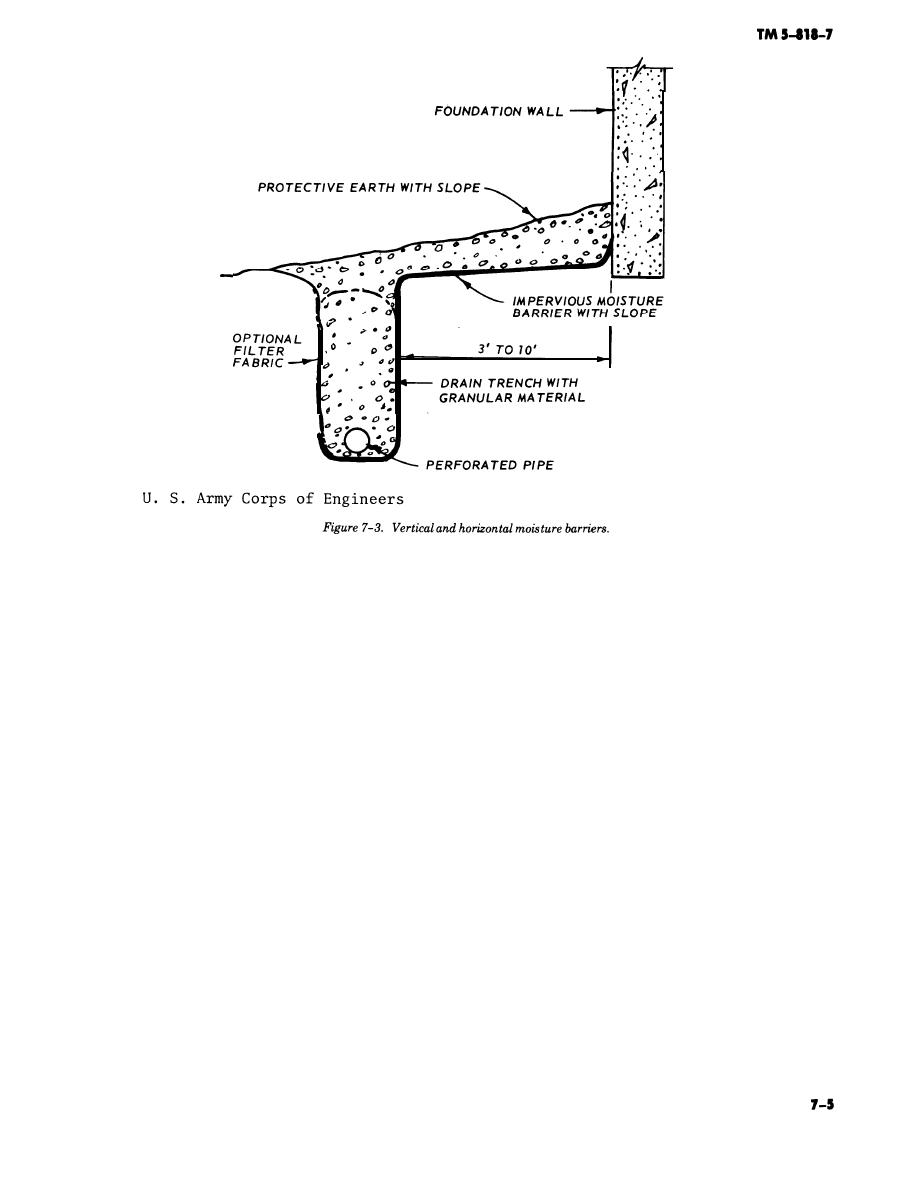
ing migration of moisture beneath the bottom edge for
the natural in situ soil through the backfill to the base-
ment and retaining walls.
active zones deeper than 8 to 10 feet. The granular bar-
-
rier may also help reduce moisture changes during
(b) Lime treatment may be used to stabilize a 6-
droughts by providing a reservoir of moisture. The
to 12-inch layer of natural expansive soil compacted on
placement of a filter fabric around the trench to keep
the surface of the construction site to provide a posi-
fine particles from entering the perforated pipe will
tive slope for runoff of water from the structure and a
permit use of an open coarse aggregate instead of a
layer to reduce differential heave beneath the floor
graded granular filter. In some cases, the perforated
slab.
pipe could be eliminated from the drain trench.
(c) Lime treatment may be applied to minimize
d. Lime treatment. This treatment is the most
downhill soil creep of slopes greater than 5 degrees (9
percent) by increasing the stiffness and strength of the
widely used and most effective technique of chemical
soil mass through filling fractures in the surface soils.
alteration to minimize volume changes and to increase
If lime slurry pressure injection (LPSI) can cause a
the shear strength of foundation expansive soils.
lime slurry to penetrate the fissures in the soil mass to
(1) Applications. Lime treatment is applied to the
a sufficient depth (usually 8 to 10 feet), then the lime-
strengthening and minimization of volume change of
filled seams will help control the soil water content, re-
soil in railroad beds, pavement subgrades, and slopes.
duce volumetric changes, and increase the soil
When this treatment is applied to foundation soils of
strength. However, LSPI will probably not be satisfac-
single and multistory structures, it is not always suc-
tory in an expansive clay soil that does not contain an
cessful because the usefulness depends on the reactive-
extensive network of fissures because the lime will not
ness of the soil to lime treatment and the thorough-
penetrate into the relatively impervious soil to any ap-
ness of dispersion of lime mixed into the soil.
(a) Lime treatment is effective in the minimiza-
preciable distance from the injection hole to form a
continuous lime seam moisture barrier.
tion of volume changes of natural soil for backfill.
However, this treatment increases the soil permeabili-
(d) LSPI may be useful for minimization of
ty and the soil strength. The soil permeability should
movement of fissured foundation expansive soils down
be kept low to restrict seepage of surface water
to the depth of the active zone for heave or at least 10
through the backfill. The backfill strength should be as
ft. The lime slurry is pressure injected on 3- to 5-foot
--
low as possible compatible with economical design to
center to depths of 10 to 16 feet around the perimeter
minimize the transfer of lateral swell pressures from
of the structure 3 to 5 feet from the structure.



 Previous Page
Previous Page
